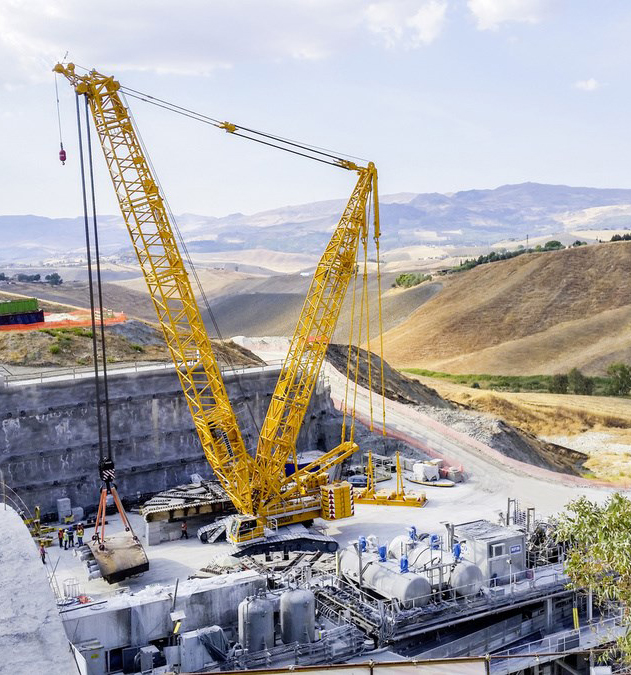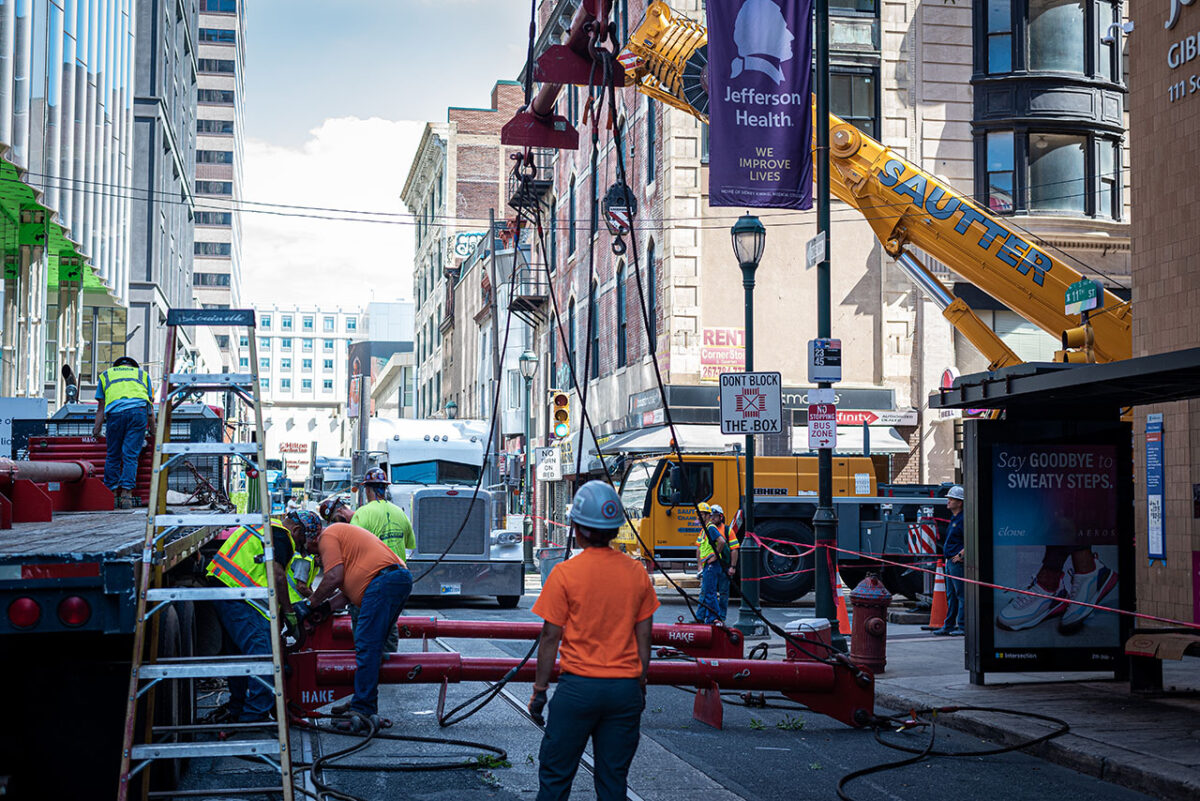Most Common Types of Cranes for Construction
Patrick Parker
on
January 12, 2024
Most Common Types of Cranes for Construction
Cranes are fascinating machinery capable of lifting, lowering, and moving heavy materials that humans and other machines simply can’t handle. They epitomize human ingenuity, combining physics, engineering, and technology into one powerful package. With so much responsibility, you can imagine the many options available for construction workers and engineers worldwide. Take a closer look at the most common types of construction cranes and how they provide their own specialized benefits to the many projects that occur each day.

Tower Cranes: The Skyscraper’s Best Friend
When you see a city’s skyline dotted with construction sites, the machinery that will likely catch your eye is the tower crane. Tower cranes are a quintessential part of any large-scale construction project, especially for structures that reach for the sky. Ever wondered how skyscrapers came to be? The answer, in large part, is the impressive work of tower cranes.
Named for their towering vertical mast, these cranes stand tall and proud, often outreaching the buildings they’re helping to construct. This height allows them to lift and transport heavy materials to great heights, which is critical when constructing multi-story buildings.
Despite their colossal size, tower cranes offer remarkable precision. Operators can control the movement of loads with surprising accuracy, ensuring materials are placed exactly where needed. This combination of height, power, and precision makes tower cranes an indispensable asset in the realm of high-rise construction.
Mobile Cranes: Versatility on Wheels
Mobile cranes are the versatile all-rounders in the crane family. Unlike stationary cranes, these machines are designed for easy transportation to and from different job sites, offering flexibility and efficiency that are crucial in many construction projects. They consist of a truss or telescopic boom mounted on a mobile platform, which could be rail, wheeled, or even on a cat track. The boom is hinged at the bottom and can be raised and lowered by cables or hydraulic cylinders.
Unlike tower cranes, which must be assembled piece by piece, mobile cranes are usually ready to go as soon as they arrive on site. This makes them a popular choice for tasks that require quick setup and dismantling or those that involve lifting tasks at multiple locations within a project site.
Telescopic Cranes
Telescopic cranes are a type of mobile crane equipped with a boom consisting of a series of tubes fitted inside the other. This design allows the crane’s arm to extend and retract, much like a telescope, hence the name. The main advantage of telescopic cranes lies in their adaptability. Their extendable arm can be adjusted to reach varying heights, making them useful in scenarios where space constraints prevent the use of larger, fixed-length booms.
Despite their extendable nature, telescopic cranes do not compromise on lifting capacity. They can handle substantial loads, making them suitable for a wide range of applications, from construction and transportation to rescue operations. However, operators must be mindful of load limits at different boom lengths and angles to ensure safe operation.
Crawler Cranes
Crawler cranes are typically larger than other types of cranes, boasting impressive lifting capacities that can exceed several hundred tons. They are equipped with a long boom that can be extended or shortened based on the project’s requirements. This makes them ideal for use in large-scale construction projects such as building bridges, erecting steel structures, and even in shipyards for shipbuilding tasks.
Another significant advantage that construction teams look for out of crawler cranes is their ability to traverse challenging terrains. The tracked or crawler system they operate on provides better weight distribution and reduces ground pressure, enabling these cranes to move over soft soils, uneven surfaces, and even steep slopes without sinking or tipping over.
Rough Terrain Cranes
Rough terrain cranes are a specialized type of mobile crane designed to operate in challenging environments. They are typically mounted on an undercarriage with four rubber tires and are known for their robust construction and excellent off-road capabilities. The key defining feature of rough terrain cranes is their single cab from where both the crane operations and driving are controlled.
These cranes come equipped with large treaded tires and a powerful four-wheel drive system that provides superior maneuverability on uneven surfaces, steep slopes, or muddy conditions. Their compact size also allows them to navigate tight spaces, making them a popular choice for construction sites with limited accessibility.
Rough terrain cranes are generally smaller than other types of cranes, but they still offer significant lifting capacities, often up to several tens of tons. Their boom is typically telescopic, allowing for adjustable reach based on the requirements of the job.
Overhead Cranes
Overhead cranes, also known as bridge cranes, are a type of industrial crane typically used in factories and warehouses for material handling tasks. They consist of a fixed rail or track mounted on the ceiling or high along the walls, over which a moveable bridge section travels. Hanging from this bridge is a hoist mechanism that can lift, lower, and transport loads horizontally.
Overhead cranes come in several types, including single-girder and double-girder designs. Single girder cranes have one beam supporting the hoist, while double girder cranes have two parallel beams. The latter offers greater load capacity and allows for larger hook heights.
Elevate Your Construction Projects With the Right Crane
The world of construction cranes is diverse, and each type is designed to meet specific needs and job site conditions. Whether it’s the heavy-lifting power of crawler cranes, the off-road prowess of rough terrain cranes, or the space-saving efficiency of overhead cranes, each of these tools can significantly enhance your project’s productivity and safety.
At Sautter Crane, we offer an impressive fleet of rental cranes suitable for various construction demands. Not sure how to handle, operate, or store a crane? No problem! We provide secure space and storage, heavy hauling and trucking, and many more crane rental services to ensure your crane is ready when you need it.
Reach out to the Sautter Crane team today and find the perfect crane for your next project!


